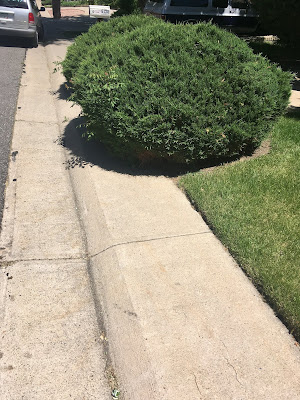 |
| With towers as a backdrop, New York is a city of neighborhoods |
by Mateja Mihinjac
Once considered a breeding ground for crime and violence, today New York City is one of the safest large cities in the USA. While this cannot be attributed to any single strategy, there is no doubt establishing close and positive relationships between public and police promises effective problem-solving and quality of life in the long run.
It was not always so! In the past, the NYPD employed a number of strategies to improve public safety. Some of the best-known and controversial tactics include broken windows policing and stop-and-frisk. Between 2005 and 2013, the NYPD relied extensively on stop-and-frisk. Unfortunately, in 2013 the way they applied the tactic was ruled
unconstitutional.
In addition,
research found no correlation between this tactic and crime rates and, given increasing tensions between the public and police, NYPD rethought their approach.
NEIGHBORHOODS ARE THE KEY
In 2015 NYPD introduced a
neighborhood policing model. The focus of the approach is permanently locating an officer - an NCO - within a neighborhood and building personal relations with residents on a daily basis. While this echoes earlier,
often criticized, forms of community policing, the New York NCO program attempts to take advantage of the intense personal knowledge of local areas.
It also provides officers with "sector integrity," allowing them time within their beat away from calls for service and assigning them to that neighborhood long enough to develop personal relationships.
NCOs focus not only on developing leads to tackle serious crime, but they also partner with residents for long-term problem-solving. As the NYPD website says:
“sector officers play the role of a generalist cop who knows and feels responsible for the sector, and who provides the full range of policing services there.”
 |
Before radio was used, beat policing and
call boxes were the norm in neighborhoods |
In effect, this is a resurgence of the local beat cop of pre-radio days, except with a problem-solving focus and without the old style
police call box. The NCO program also resonates with our methods in SafeGrowth where we teach residents how to partner with police, create planning teams, and target unsafe activities to create neighborhood safety plans.
NCOs - NEIGHBORHOOD COORDINATION OFFICERS
The cornerstone of NYPD neighborhood policing are the NCOs - Neighborhood Coordination Officers whose daily presence within the assigned neighborhood and respectful demeanor help build relationships.
 |
| New York NCOs and residents team up to solve problems |
I witnessed the positive effect of this approach on several occasions while in New York: residents would greet their NCOs with hugs while NCOs would share their personal phone number with the residents should they need assistance with crime-related issues. The goal is for officers to be part of the community and be seen as an ally as opposed to an enemy.
According to the New York City
Police Foundation, in neighborhoods implementing neighborhood policing since 2015, shootings have declined 58% faster and the number of arrests declined 10% faster compared to the rest of the city. In the past two years, NCOs on foot patrol have met thousands of residents in hundreds of meetings, thereby building deeper local relationships in neighborhoods throughout the city.
As NCO policing continues to expand to precincts across all five New York City boroughs, the approach has been recently applied to
transit. NCOs will patrol the same subway stations and train lines to provide safety and build relationships, in this case with frequent riders. The beat cop, so common in another era, has now returned to the neighborhood.












